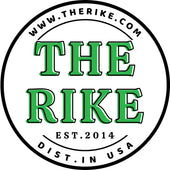Urban Herbalism: Sustainable Practices for Growing Healing Plants
Introduction
Urban herbalism is more than just a trend; it’s a journey into the healing power of plants right within our cities. As urban dwellers become increasingly disconnected from nature, the practice of growing healing plants in small spaces offers a pathway to health and sustainability. This article explores urban herbalism and provides sustainable practices for cultivating healing herbs in urban settings.
The Importance of Urban Herbalism
Urban herbalism bridges the gap between modern living and traditional practices, allowing individuals to reclaim their health through natural remedies. The significance of this practice includes:
- Access to Fresh Herbs: Growing herbs at home ensures fresh access to medicinal plants.
- Cost-Effective: Reducing the need for store-bought remedies can save money.
- Environmental Benefits: Urban gardening reduces carbon footprints and enhances biodiversity.
- Community Connection: Urban herbalism fosters stronger community ties through workshops and sharing.
Getting Started: Choosing the Right Herbs
When selecting herbs to grow in your urban garden, consider their medicinal properties, growth requirements, and your personal preferences. Here are some beginner-friendly herbs:
- Basil: Known for its anti-inflammatory properties and culinary uses.
- Peppermint: Excellent for digestion and a refreshing addition to teas.
- Chamomile: Great for calming anxiety and promoting sleep.
- Thyme: An antiseptic and dear ally for respiratory health.
- Rosemary: Supports memory and digestion.
Creating Your Urban Herbal Garden
Space Considerations
Urban gardening can thrive even in the smallest of spaces. Whether you have a balcony, a rooftop, or just a sunny windowsill, there are ways to make it work:
- Container Gardening: Use pots, containers, or vertical planters to maximize limited space.
- Raised Beds: If you have access to community gardens or yards, raised beds can offer deeper soil for root growth.
- Window Boxes: Perfect for herbs that need sunlight and minimal space.
Soil and Planting
Healthy soil is crucial for growing medicinal plants. Here are some key points:
- Use organic soil to avoid chemical residues.
- Incorporate compost to enhance soil nutrients.
- Plant herbs according to their sun and water requirements for best results.
Sustainable Practices in Urban Herbalism
Emphasizing sustainability is vital in urban herbalism. Here are practices to adopt:
- Companion Planting: Pairing plants that benefit each other can improve growth and pest resistance. For example, basil can enhance the flavor of tomatoes and repel pests.
- Water Conservation: Use rainwater harvesting systems or drip irrigation to minimize water waste.
- Organic Pest Control: Employ natural methods such as neem oil, insecticidal soap, or diatomaceous earth for pest management.
- Seed Saving: Collecting and storing seeds from your herbs can promote biodiversity and reduce reliance on commercial seeds.
Harvesting and Using Your Herbs
Harvesting Techniques
Knowing when and how to harvest your herbs is key to maximizing their medicinal properties. General tips include:
- Harvest in the morning, after the dew has dried, for optimal flavor and potency.
- Regular pruning encourages healthier growth and prevents flowering, which can diminish flavor.
- Use sharp scissors to avoid damaging the plants.
Making Herbal Remedies
Once harvested, there are various ways to prepare your herbs for use:
- Infusions: Steep herbs in hot water to create teas.
- Tinctures: Extract active compounds using alcohol.
- Salves: Combine herbs with oil and beeswax for topical application.
- Dried Herbs: Dry and store herbs for long-term use.
Community Engagement and Education
Urban herbalism thrives on community knowledge, sharing, and education. Engaging with local organizations and communities can enhance your practice:
- Workshops: Attend or host workshops to learn new skills and share knowledge about herbalism.
- Community Gardens: Join a local community garden to collaborate on growing herbs and sharing resources.
- Online Forums: Engage with online communities focused on urban gardening and herbalism for tips and support.
Conclusion
Urban herbalism not only provides healing through plants but also fosters a connection to nature and community. By adopting sustainable practices and engaging with others, you can cultivate your own healing garden in the heart of the city. The journey into urban herbalism is fulfilling, offering both health benefits and a deeper appreciation for the natural world around us.





Leave a comment